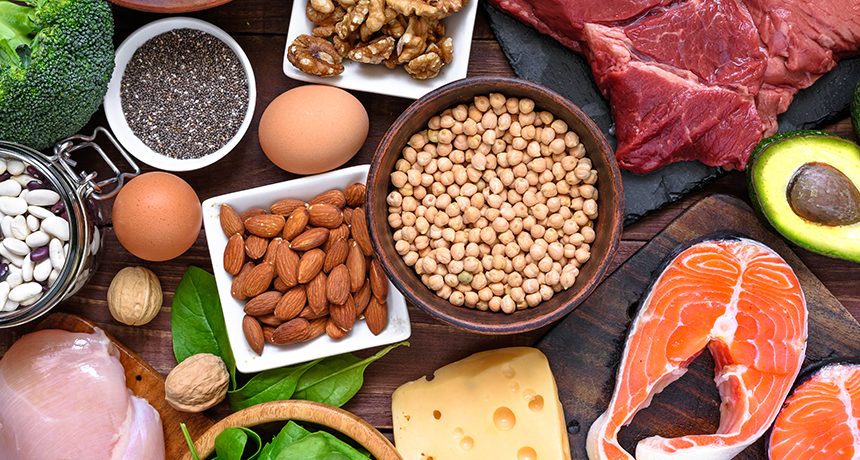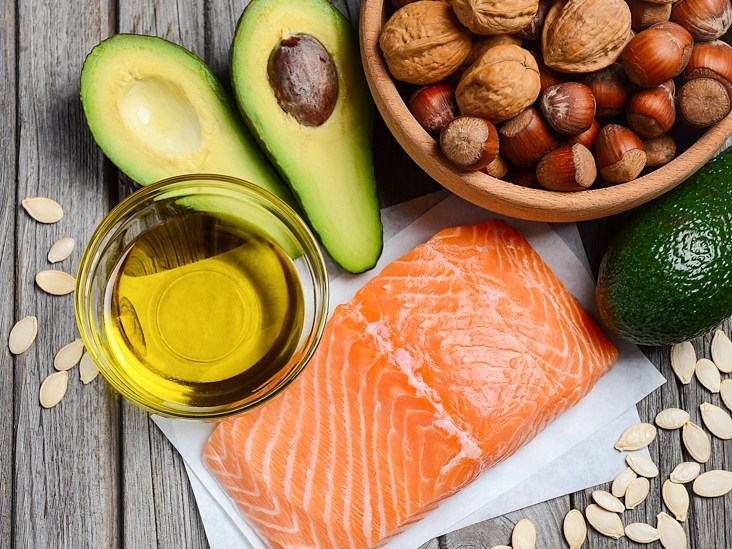Macronutrients Explained + Special Offer
Watch this fun video and get clear on macronutrient counting:
Ready to dive in? Get 20% off on our Step By Step Nutrition Coaching Program through July 7th HERE. Read on for a more detailed description.
What are macros?
Macros is the shortened term for macronutrients — the fat, protein, and carbohydrates that make up a food’s composition, and help you create energy. You can find them listed on the nutrition facts panel of most foods, or by using calorie counting apps and calculators.
Gram for gram, macronutrients are responsible for the calorie count in your food.
Three Main Macronutrients
There are three main macronutrients: protein, carbohydrates, and fat. Alcohol is a macronutrient too, which we’ve covered extensively here. Let’s go through each macronutrient to get a basic understanding.

PROTEINS
Calories: 4 calories per gram.
Protein is mostly associated with building muscle and primarily found in foods like meat and dairy. However, its uses extend beyond muscle: it’s the core component of organs, bones, hair, enzymes, and pretty much all other types of tissue in your body.
Proteins are made of amino acids, many of which the body can make itself. However, there are nine amino acids that are strictly required for normal body function that your body can’t biosynthesize. These are called essential amino acids, and the full nine can be found from all meat sources. Unfortunately for vegetarians and vegans, it’s rare to find the full nine in legumes and grains, so you need to make sure you eat a large variety to get all of them.

CARBOHYDRATES
Calories: 4 calories per gram.
First friend, then foe, then friend again–the diet industry’s relationship with carbohydrates has been fickle at best. While it’s technically the only macronutrient your body can survive without, doing so would be no fun. Carbs are your body’s most easily accessible source of energy, and is broken up into glycogen (used by muscles and your liver) and glucose (used by the brain).
In common nutrition speak, carbs are largely divided into simple and complex carbohydrates. The two classifications refer to the length of the carbohydrate molecules. The shorter the molecule chain is, the easier it is for your body to break down, so it’s “simpler”—basically they’re sugars. On the other hand, larger molecules, like starch, are “complex” because it takes longer for your body to break it down into usable components.
In the world of macros, a carb is a carb, whether it comes from sugar or starch. Be clear: this isn’t an endorsement rely on pop tarts and candy to meet your targets. In fact, what you will notice is that after counting macros a while, you’ll probably gravitate towards complex sources of carbs for satiety’s sake. But the freedom of choice is there, and relaxing this boundary between “good” and “bad” foods is important to develop a healthier relationship with what you eat.

FATS
Calories: 9 calories per gram.
Fats are a key component of essential dietary supplements like nutella, bacon and peanut butter. In all seriousness, though, fat often gets a bad rap because its the most calorie-dense nutrient out there. But they’re very important to normal body functions, acting as the backbone to important hormones, insulation for nerves, skin and hair health, and so on.
There are a bunch of different types of fats, from saturated to monounsaturated to polyunsaturated fats. Out of all of them, the main three you should be concerned about are trans fats, omega-3 fatty acids, and omega-6 fatty acids.
Trans fats, colloquially known as “frankenfats”, have been consistently shown to increase the risk of coronary heart disease, and should generally be avoided. They’re usually found in packaged foods and various brands of margarine.
The latter two, however, are what’s known as essential fatty acids. Similar to essential amino acids, your body can’t produce them by itself so you have to obtain them through your diet. Omega-3’s can be found in fatty fish, flax, and walnuts (note that they’re more easily absorbed from animal sources), and omega-6’s from pretty much all kinds of vegetable oil.
Flexibility and customization
There are no one-size-fits-all macros — depending on your unique health goals, you can manipulate them to achieve different effects. And when special occasions come around, you can plan around them so you can join in the festivities without running your diet off the rails. This kind of flexibility may help you stick to a long-term eating plan.
More balance in your diet
Unlike some restrictive diets, counting your macros does not force you to eliminate entire food groups. Instead, you can focus more on getting the best balance of nutrients to amp up your performance.
When your macronutrients are balanced, you can also avoid some of the problems with overeating in one macro category (such as feeling fatigued after eating too many carbs, or feeling constipated from too much fat and not enough fiber).
Image credit: https://myfitstation.com
2019 06 30